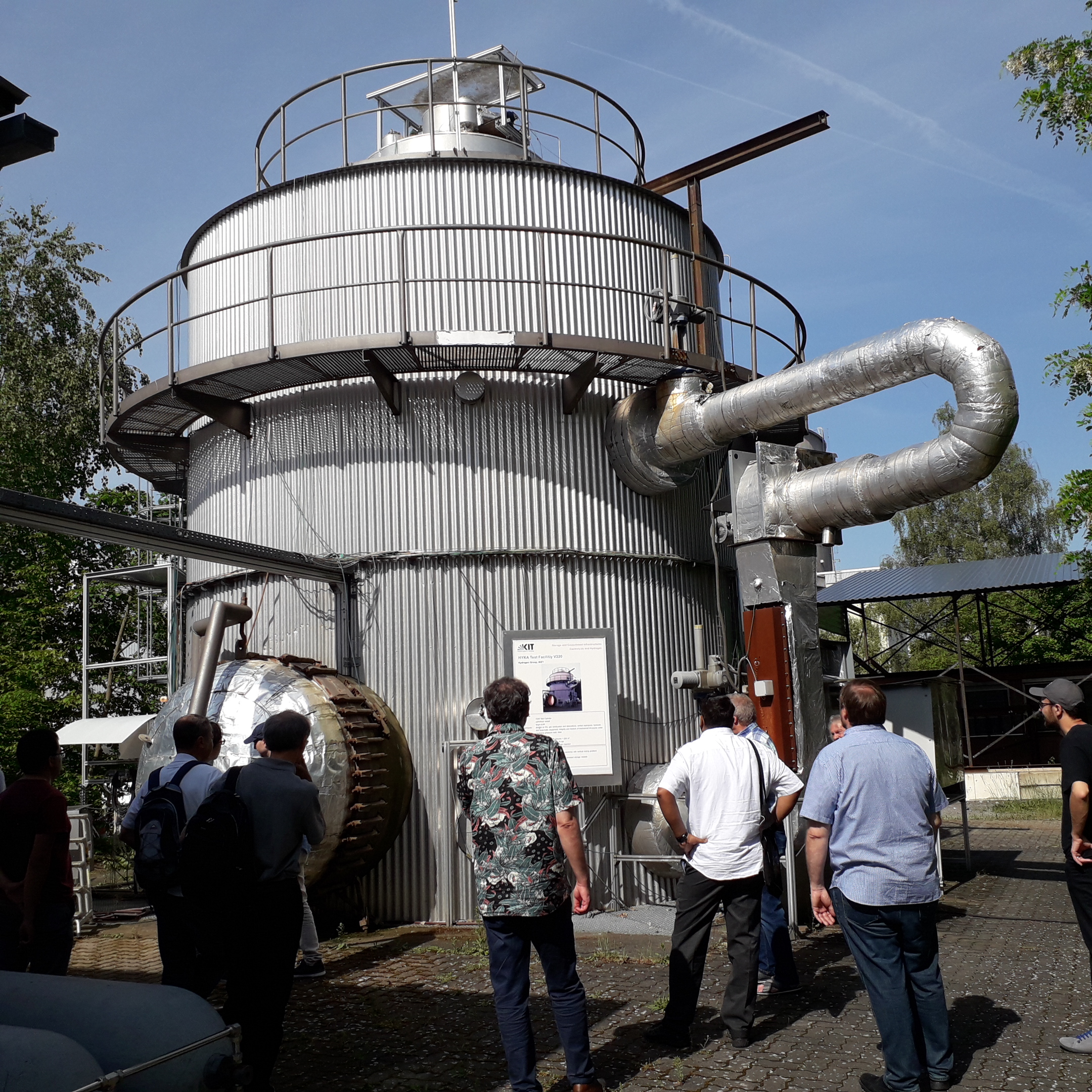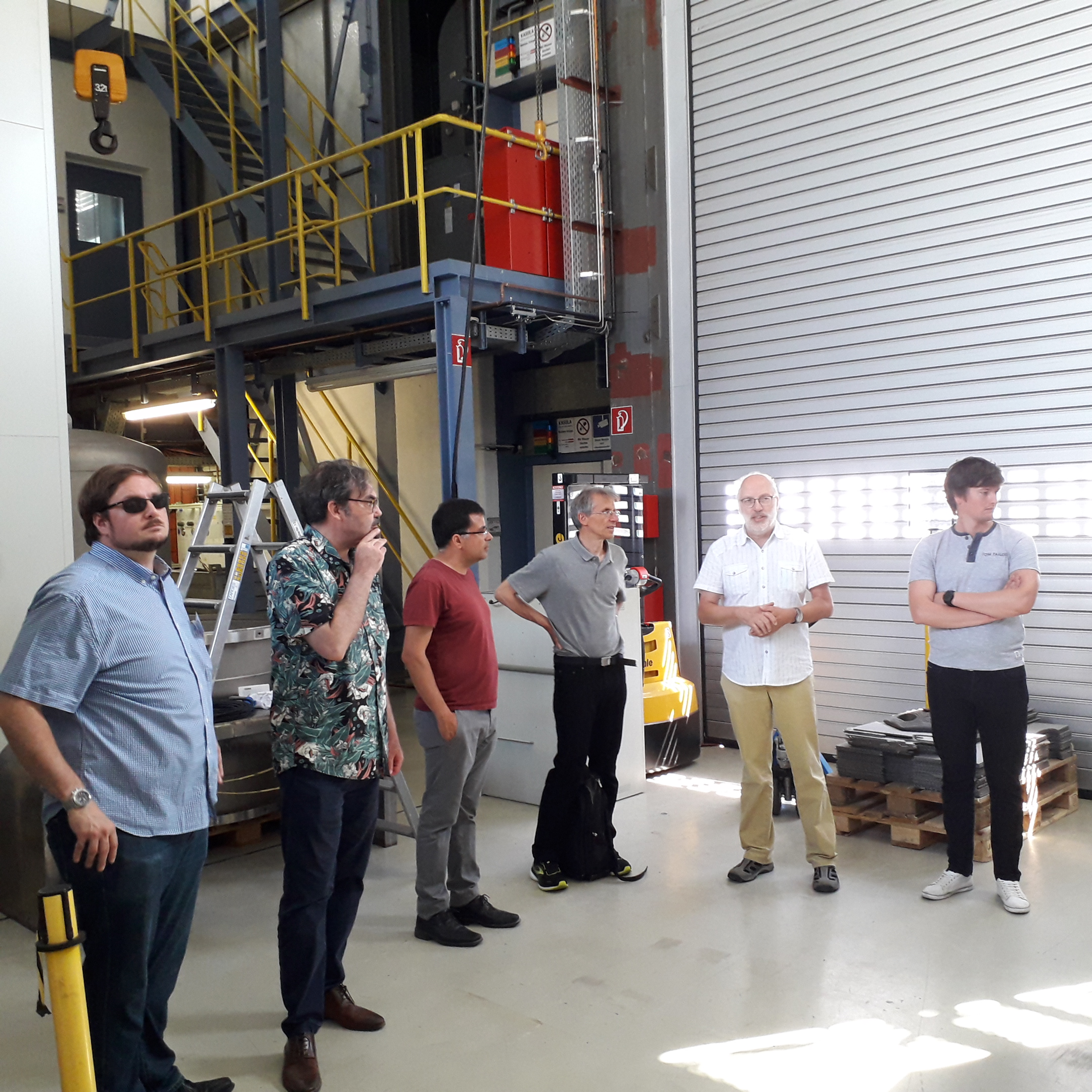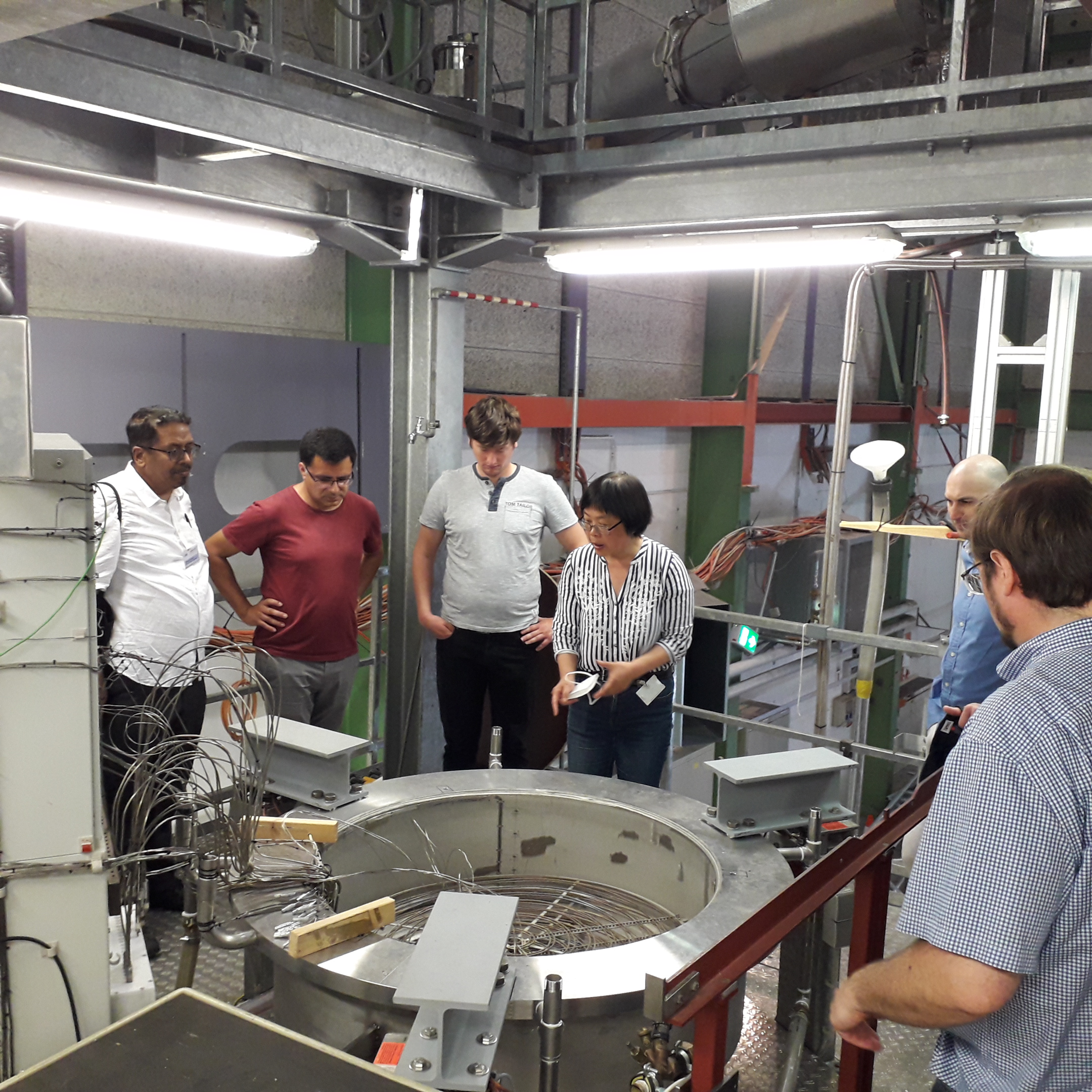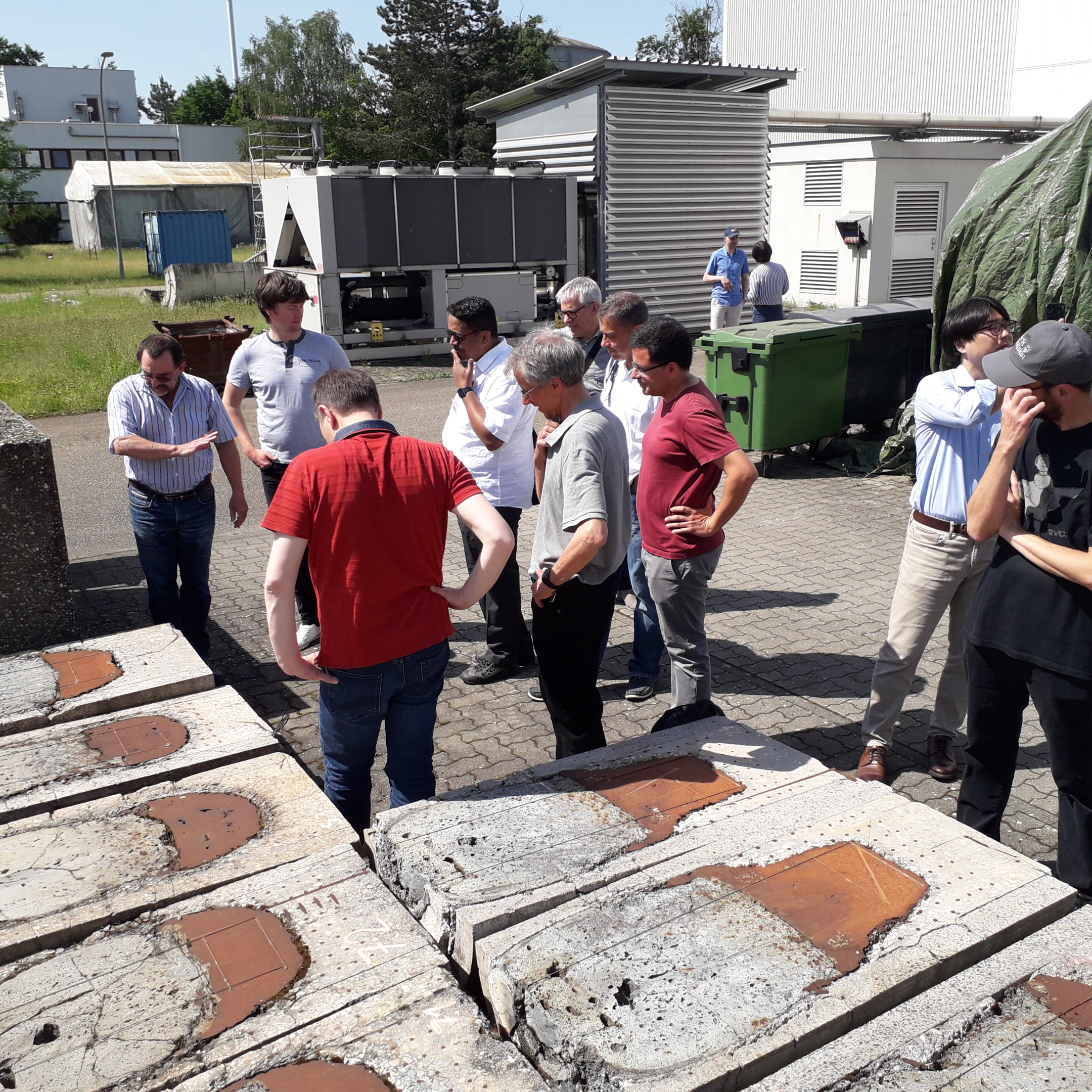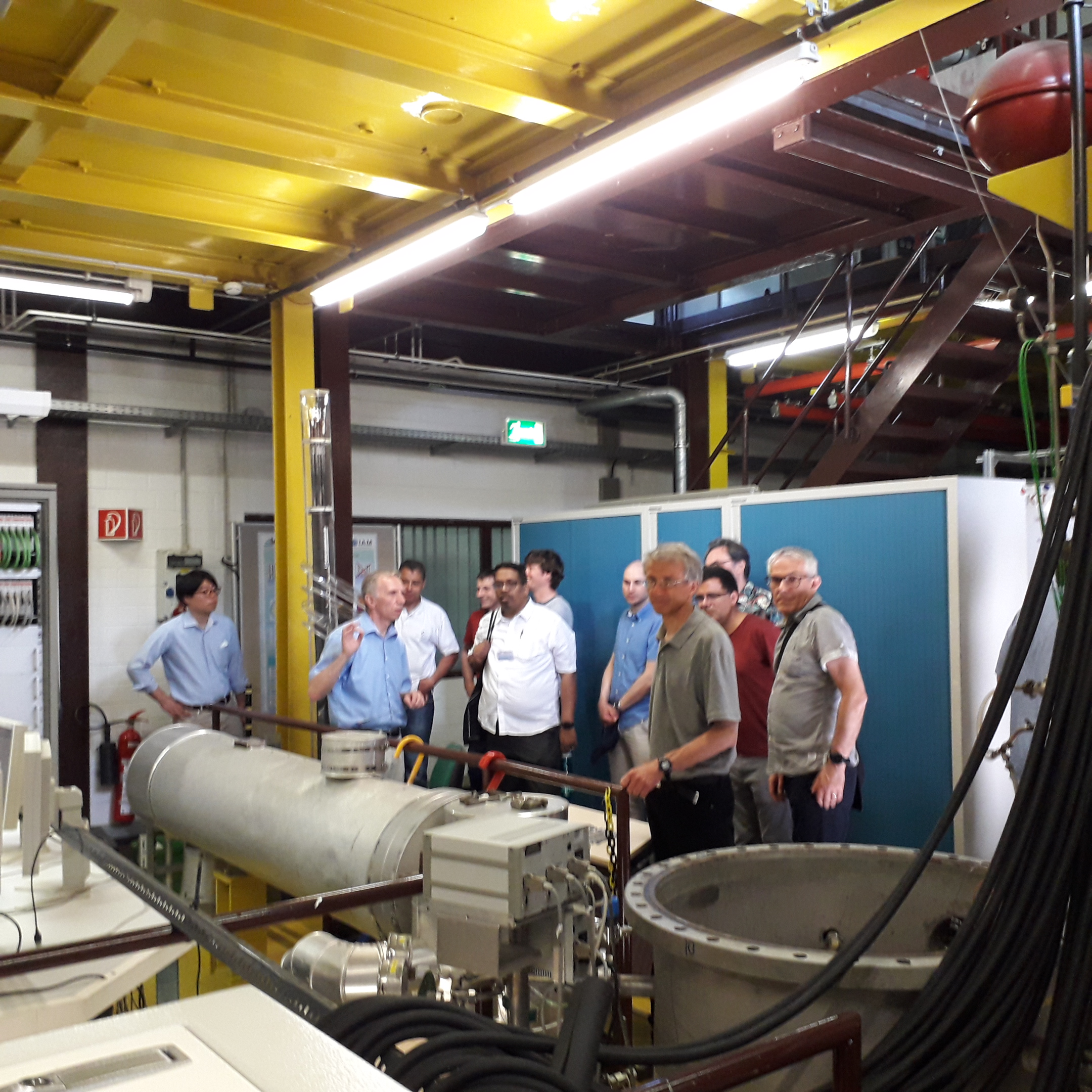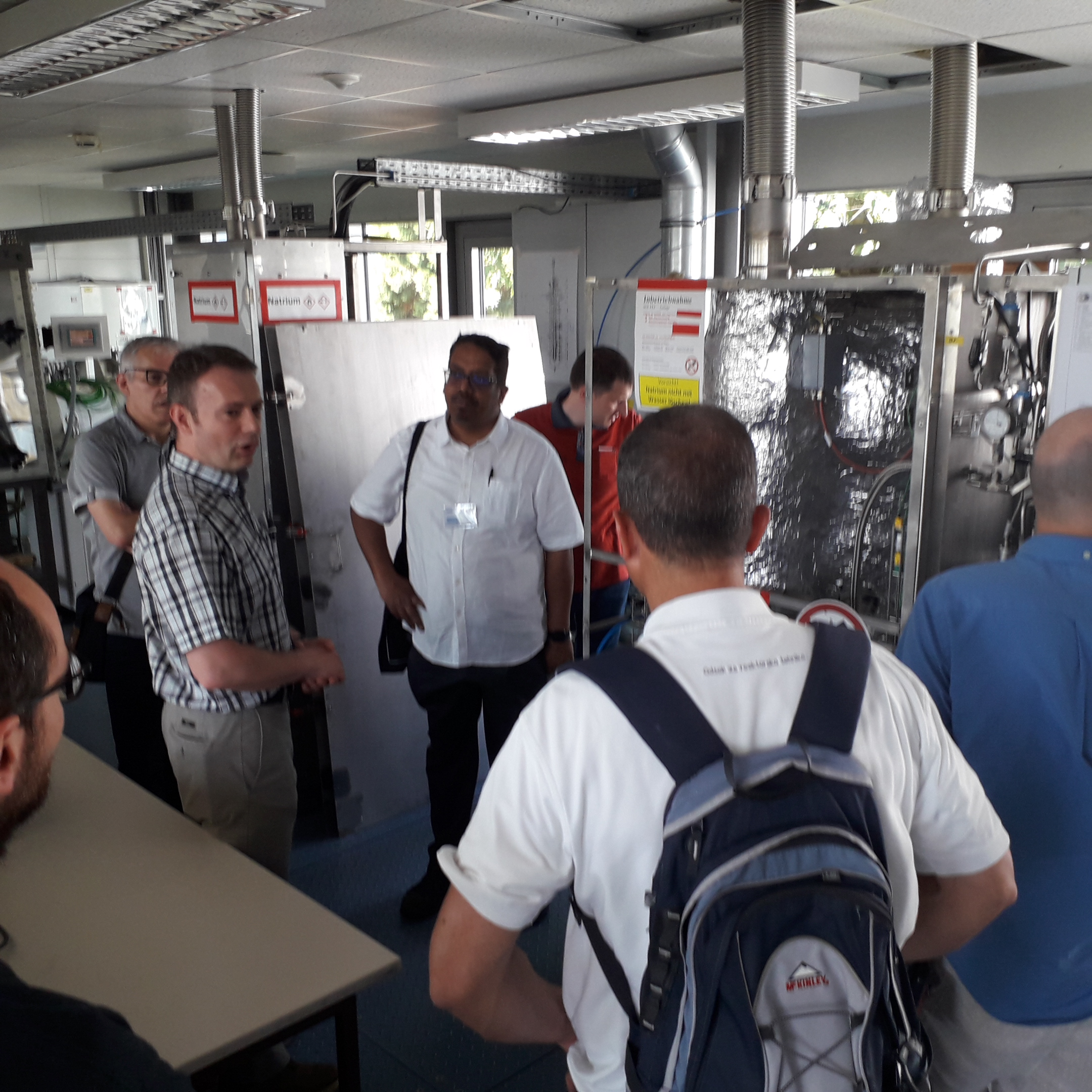Breaking Ground in Radionuclide Research
A state-of-the-art laboratory for high-precision radionuclide analysis is being built on Campus North as part of the Helmholtz infrastructure project HOVER – completion is scheduled for 2027

New building construction underway: Dr. Stefan Schwartze, Vice President for Finance, Human Resources, and Infrastructure; Professor Horst Geckeis, Head of INE; and Dr. Thomas Walter Tromm, Program Spokesperson for NUSAFE (from left to right).
With the groundbreaking ceremony on Wednesday, October 22, 2025, construction of a new mass spectrometry laboratory will begin at KIT’s Institute for Nuclear Waste Disposal (INE). The lab is part of the HOVER infrastructure project, which is jointly advanced by the Helmholtz Centers KIT, FZJ, and HZDR in the frame of NUSAFE Topic 1. As part of this initiative, several large-scale technical facilities will be built at KIT. The aim is to further strengthen the scientific foundation for the safe decommissioning of nuclear facilities and the disposal of radioactive waste.
Research for safe decommissioning and disposal
“With the new mass spectrometry laboratory, we are creating an infrastructure that allows us to measure even extremely low concentrations of long-lived radionuclides,” says Professor Horst Geckeis, Head of the INE. “This allows us to answer key questions regarding the behavior of radioactive substances in waste forms and under final repository conditions – a decisive contribution to the safe implementation of the Nuclear Waste Disposal Project in Germany.”
The new building will house an accelerator mass spectrometer and an ISO Class 4 cleanroom laboratory. This combination will enable the detection of ultra-trace concentrations of radioactive nuclides in environmental samples and samples from underground laboratory experiments. The new infrastructure will also serve as a foundation the basis for education and research in nuclear waste disposal and will offer young researchers a modern working environment.
mhe, October 23, 2025
New research project by KIT's Decommissioning Department approved
Following the shutdown of a nuclear power plant, the operator is obliged to dismantle the facilities. In order to remove plant components from nuclear power plants and release them in accordance with the Radiation Protection Ordinance, their activity must be below a limit value. Typical nuclear power plants in Germany have 100,000 m² to 450,000 m² of concrete surfaces [Gentes et al., 2015] that must be processed for clearance.
According to the current state of the art, the spatial data acquisition is performed manually in the previous process. Thus, no digital spatial models or similar are available for the further process steps.
The aim of the ViMPoG (Visualisation of building structures for the clearance measurement and precise positioning of the measuring device in the building release) project is to develop methods and algorithms for an improved, efficient and at the same time safe execution of building clearance and for planning decommissioning works. In the center of the project is the digital model for users in nuclear facilities, on the basis of which both the premises to be released and all relevant trouble spots within these parts of the building can be visualised and evaluated according to the requirements of the clearance process. In the project, algorithms are investigated and developed for automated creation of the model. Based on the visualisation of the building structures and other information from the so called building cadastre decontamination work and clearance measurements are to be planned digitally and the precise positioning of the measuring device is to be supported and monitored. Therefore, appropriate procedures and algorithms are being investigated and developed. The measuring geometries are to be optimized with the involvement of the trouble spots and further information included in the digital model. In this way, it should be possible to reduce the effort required for measurement planning, execution and documentation of decontamination and decision measurements for users in nuclear facilities. In addition, a digital release process on the part of operators, authorities and experts can be realized based on this, which can contribute to standardisation of building clearance.
The project, with iUS GmbH consultants advisors as partner, is funded by the Federal Ministry of Research, Technology and Space (BMFTR). The project started in October 2025 and builds on the findings and results of a predecessor project.
KIT‘s Decommissioning Department contributes to the NUSAFE Topic 1, Nuclear Waste Management / Subtopic 2, Predisposal. Another project proposal from the Decommissioning Department will be evaluated at the end of October 2025
With funding from the:
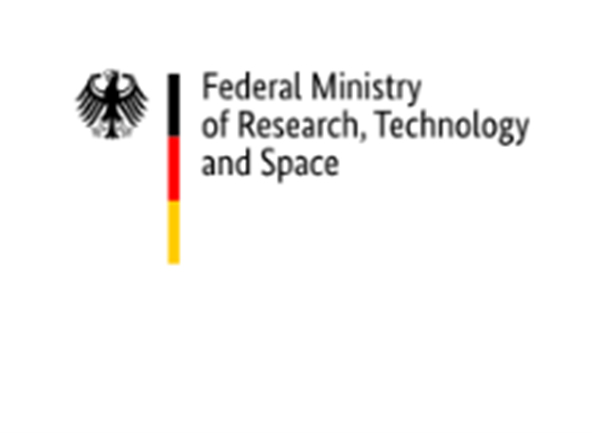
The 30th Edition of the FJOH-SS jointly organized by KIT and CEA took place in Geno Hotel Karlsruhe from August 20 to August 29, 2025. The topic was “Technological Development Path from Proven Designs to Advanced Modular Reactors”. It attracted 46 participants from 13 countries and different institutions (universities, industry, regulators, TSOs, research centres). In total sixteen experts from EU and abroad gave lectures about latest developments of their respective area of expertise related to the school’s topic and discussed it in-depth during the summer school.
The first block of lectures was devoted to “From early-day reactors to modern-day reactors and challenges”. K. Hesketh (NNL) outlined the promise and significant challenges associated with the deployment of Advanced Modular Reactors (AMRs) being developed to overcome the major financial barriers of large nuclear plants, such as high investment costs, long construction periods, and financial risks that deter private investors. AMRs are designed for expanded roles beyond baseload electricity, including providing grid inertia to support renewables, supplying industrial heat, and enabling autonomous generation in remote locations. However, their deployment faces immense challenges including R&D, licensing, and overcoming the conservatism of utilities. JC. Garnier (CEA) elaborated about the evolution of nuclear reactor technology from early prototypes to the current fleet Generation II Light Water Reactors (Gen-II LWR). The "pioneering era" of the 1960s and 1970s saw rapid expansion, notably in France, which built standardized Pressurized Water Reactor (PWR) fleet in response to the oil crises. A subsequent more difficult era began after major accidents at TMI-2, Chernobyl, and Fukushima. Today, the global effort for "Net Zero" carbon emissions has sparked a renaissance for nuclear energy, recognized as a key part of the solution to decarbonize electricity and industry. Now, the focus is on Gen III reactors and sustainable Gen IV systems such as Sodium Fast Reactors (SFR) with potential to vastly improve uranium resource utilization and reduce long-lived radioactive waste by closing the fuel cycle.
The second block topic was focused on High Temperature Reactor (HTR) for heat production.
K. Verfondern (formerly FZJ) described the evolution of the Gas-Cooled Reactors such as the early UK-designs like MAGNOX, the Advanced Gas-cooled Reactor (AGR) and High-Temperature Gas-cooled Reactors (HTGRs), characterized by graphite-moderated core, helium coolant, and TRISO (TRI-structural iSOtropic)-fuel that enables very high operating temperatures of up to 950°C. Decades of experience from international test reactors like Dragon (UK), Peach Bottom (USA), and AVR (Germany) provided important data and lessons learned for the nuclear community. However, subsequent larger-scale projects like Fort St. Vrain and THTR-300 proved to be technically/financially challenging. Hence, small reactors like the HTR-PM (Pebble-bed Module) started first commercial operation by end of 2023. Among the advantage of HTGRs is the supply of high-temperature process heat for decarbonizing industries, for hydrogen production, steam reforming, and district heating. This also introduces unique safety considerations, such as managing tritium permeation and explosion risks from coupled industrial facilities. J. Wright (Westinghouse) presented the TRISO-fuel concepts, from manufacturing to disposal, and operational limits. He highlighted the robustness of TRISO and the peculiar multi-layered particle design that is key for fission products retentions even at very high temperatures. Modern TRISO-fuel has evolved to mitigate early failure mechanisms. The AGR program promoted by the DOE was crucial in demonstrating the exceptional performance and low failure rates of UCO (Uranium oxide/carbide) fuel at high burnup, establishing it as the reference for many new reactor designs. Current research focuses on optimizing designs for micro-reactors and exploring next-generation materials. Y. Nomoto (JAEA) discussed the inherent safety features of High Temperature Engineering Test Reactor (HTTR) and the potentials to deliver high-temperature heat (up to 950°C) for various applications such as process heat and hydrogen production. Their design incorporates inherent safety features, such as heat-resistant fuel and a graphite-moderated core with high thermal capacity, which enables passive heat removal and makes it feasible to design a reactor that would not melt. These features were demonstrated by tests such as the Loss of Forced Cooling (LOFC), where the reactor was shut down and remain stable without active equipment or operator intervention, even in case of a station blackout. JAEA is now leading a project to demonstrate the world's first hydrogen production using heat from a HTTR connected to a hydrogen plant. As part of its Green Transformation policy, the Japanese government supports the development of HTGR demonstration reactor to enter into operation in the second half of 2030s to supply large-scale, carbon-free hydrogen to decarbonize heavy industry.
The third block of lectures were concentrated on Lead-cooled Fast Reactor (LFR) for closing the fuel cycle. J. Wallenius (KTH) described the LFR-development from the early nuclear-powered submarines to modern, large and small LFR-projects. LFRs are an advanced nuclear technology utilizing molten lead or lead-bismuth as a coolant that are characterized by high boiling point (1740°C) and low-pressure operation. However, it also presents challenges, such as corrosivity that requires special steels and oxygen control, and opacity that complicates inspections. Historically, lead-bismuth cooled reactors were used in Soviet submarines, providing valuable operational experience but also highlighting risks, such as a core melt in one submarine caused by lead-oxide blockage. Today, several international projects are developing LFRs for civilian power production, including BREST-300 in Russia, LFR-AS in Italy, EAGLES in Romania, and SEALER in Sweden. Special attention is put on designs with passive safety for short- and long-term core cooling under normal and off normal conditions. These systems are designed to manage accident scenarios like a station blackout or transient over-power without needing external power or operator intervention, ensuring the fuel remains intact. This makes LFRs a potentially compact and inherently safe reactor design. K. Liftin (KIT) and A. Weisenburger (KIT) highlighted the prominent role of lead (Pb) and lead-bismuth eutectic (LBE) as coolants for advanced reactors due to efficient heat transfer and high boiling points. However, their use presents two major technical hurdles: materials compatibility and thermal-hydraulics. Mitigation strategies such as active oxygen control in the primary coolant e.g., for the in-situ formation of a protective oxide layer on the cladding, are needed for this kind of coolants. Research is focused on solutions like protective coatings and new Alumina-Forming Austenitic (AFA) steels, which are designed to create a highly stable alumina layer and have shown excellent corrosion resistance in current test campaigns. Extensive thermal-hydraulic experiments are performed to study heat transfer in complex geometries under normal and accident conditions, such as fuel rod blockages, to generate reliable data and correlations to be implemented in the respective safety analysis codes after their validation. S. Gianfelici (ENEA), highlighted the unique safety features of LFRs e.g., high boiling point (1749°C), low-pressure operation, making boiling unlikely and facilitating passive decay heat removal via natural circulation during off-normal events like a Loss of Flow (LOF). Key challenges include the coolant's high density creating seismic risks like sloshing, its corrosivity requiring special materials, and the potential for freezing. He also explained the fundamental safety approach for the licensing of such reactors, where the Defence in Depth concept and fundamental safety functions play a prominent role.
The fourth block of lectures dealt with Molten Salt Reactors (MSR) for waste reduction. Y. Krepel (PSI) described the large number of designs and categories of MSR, where the fuel is dissolved in a liquid salt that also functions as the coolant. According to the IAEA, they are classified based on the number of materials in the active core into three main classes: Graphite-based, Homogeneous (fuel salt only), and Heterogeneous (fuel salt with a barrier and separate coolant or moderator). These MSR-designs offer significant fuel cycle flexibility, enabling concepts that can be breeders, converters, or burners operating on either the thorium-uranium or uranium-plutonium cycles. More than 80 designs were developed since decades. In addition, MSRs possess strong inherent safety characteristics. The liquid fuel expands as it heats up, creating a strong negative temperature feedback coefficient that naturally regulates reactivity. Furthermore, the fuel operates at low pressure and can be passively drained into subcritical tanks for safe decay heat removal during off-normal events. A unique feature is the potential for continuous removal of volatile fission products, which is a technological requirement that can also reduce the radioactive source term in an accident. Key challenges remain, including material corrosion and managing the unique reactor physics of a moving fuel inside and outside the core. O. Benes (JRC) discussed the knowledge gaps of MSR salt and materials. It uses liquid fuel, enabling very safe, low-pressure, high-temperature operation for various applications. Following early successful experiments at ORNL, MSRs are now seeing renewed global interest and significant funding for commercial deployment. However, progress is impeded by key knowledge gaps. Critical data is lacking on the thermophysical properties of fuel salts, long-term material corrosion, and the effects of irradiation on fission product behaviour and structural materials. Extensive experimental campaigns are now underway to generate this qualified data, which is essential for MSR- deployment and safety demonstration. B. Kedzierska (KIT) highlighted the safety aspects and simulation challenges of MSR e.g., Molten-Salt Reactor Experiment (MSRE), Molten-Salt Breeder Reactor (MSBR), and Molten-Salt Fast Reactor (MSFR). A key engineered safety feature is the passive draining system, where a "freeze plug" melts during a loss of power, allowing gravity to drain the fuel into cooled, subcritical tanks for a fail-safe shutdown. Most radioactive fission products are chemically bound within the salt, and gaseous ones can be continuously removed, reducing pressure build-up and the potential for release. Major technical challenges remain, primarily managing high-temperature material corrosion, tritium permeation, and the complex physics of a circulating fuel source where delayed neutron precursors drift out of the core. In addition, the role of passive systems to remove the residual heat as well as the numerical simulation tools existing for safety evaluations were highlighted and some examples of accident analysis were discussed.
The block five was devoted to early reactor concepts such as the Organic-cooled Reactors (OCR), space reactors and historical experiments as well as the role of heat pipes in such reactor designs.
K. Shirvan (MIT) presented a review of OCRs, a technology being considered for modern applications like data centres and maritime shipping and driven by a need for cost-effective and mission-specific reactor designs. OCRs were proposed by Szilard and Fermi and the early OCR-designs showed significant operational advantages. First reactors were known for being trouble-free, easy to maintain, and exceptionally safe for workers due to very low radiation fields around the primary circuit, which allowed for hands-on maintenance during operation. The use of low-pressure, non-corrosive coolants enables the use of low-cost materials like carbon steel. Key challenges remain, primarily the coolant's degradation under irradiation, which produces hydrogen gas and polymers, and its poor heat transfer properties compared to water. The fluid is also flammable, though it operates below its auto-ignition temperature. Current research is exploring modern fluids to make OCRs a viable option for transportable applications. N. Roskoff (Westinghouse) outlined the role of space nuclear reactors as a compact, reliable alternative to solar panels for power and propulsion in space. Fission-based systems are divided into two main categories: Nuclear Thermal Propulsion (NTP) and Nuclear Electric Propulsion (NEP). The feasibility of NTP was proven in historical ground-based test programs like Rover/NERVA. NEP systems use a reactor to generate electricity, which then powers highly efficient (5-10 times chemical rockets) but low-thrust electric engines. This approach is ideal for long-duration missions and providing power to payloads. Modern designs, like the AstroVinci, adapt terrestrial microreactors for space applications, using passive heat pipes for reliable heat removal.
F. Weyermann (GRS) discussed the concept of heat pipes as highly efficient (capillarity), passive devices for large heat transfer with minimal temperature difference. They operate by evaporating and condensing a working fluid within a sealed vacuum tube, requiring no moving parts or external power. This technology is central to the design of Heat Pipe Micro Reactors (HPMRs), a class of advanced nuclear reactors intended for niche applications like disaster relief, remote military operations, or space power. Commercial designs like Westinghouse's eVinci® are based on heat pipes. Key challenges include understanding the long-term degradation of heat pipes under irradiation and e.g., managing start-ups when the liquid metal coolant is frozen. Experimental programs are going on for non-nuclear and nuclear applications for code validation purposes.
In the second week, the participants and lecturers had the opportunity to visit key experimental facilities (KALLA, COSMOS, QUENCH) of KIT Campus North devoted to reactor safety research for different reactor concepts, which are unique in the respective fields of research.
Finally, the week-end program, apart from other social activities e.g., visit of the Lighting Show at the Castle of Karlsruhe. A highlight was the visit of the Atomkeller Museum in Haigerloch and the beautiful neighbourhood such as the Castle of Hohenzollern during the Sunday Excursion. A Gala dinner at the Castle Ravensburg crowned the long excursion day.
The KIT FJOH Summer School Team (Dr. V. Sanchez, Dr. F. Gabrielli)
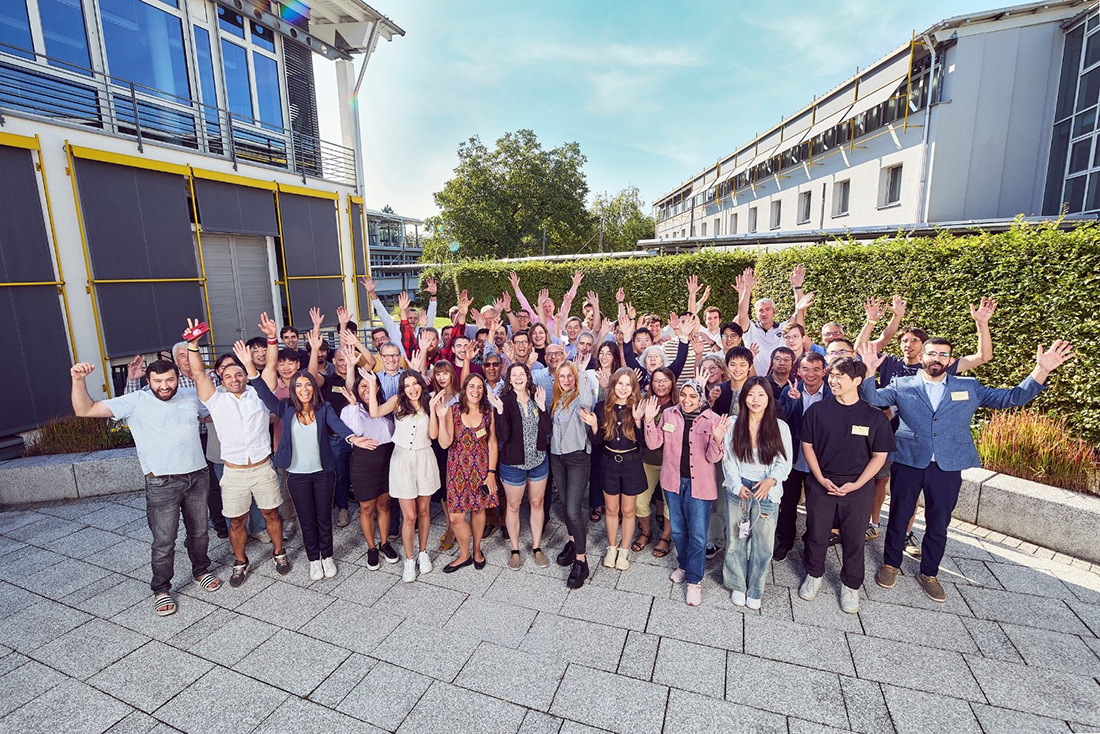
COSMOS-H officially opened
On 8 May 2025, the COSMOS-H thermohydraulic test facility (Critical heat flux On Smooth and MOdified Surfaces – High pressure loop) was officially opened at KIT Campus North.
Experimental operation already started in 2024. The first experiments are focused on heat transfer in boiling flows at heated cladding tubes. Current projects deal with SMR concepts, ATF materials and the acquisition of experimental data for the development of advanced simulation codes.
For further information, see https://www.ites.kit.edu/625.php.
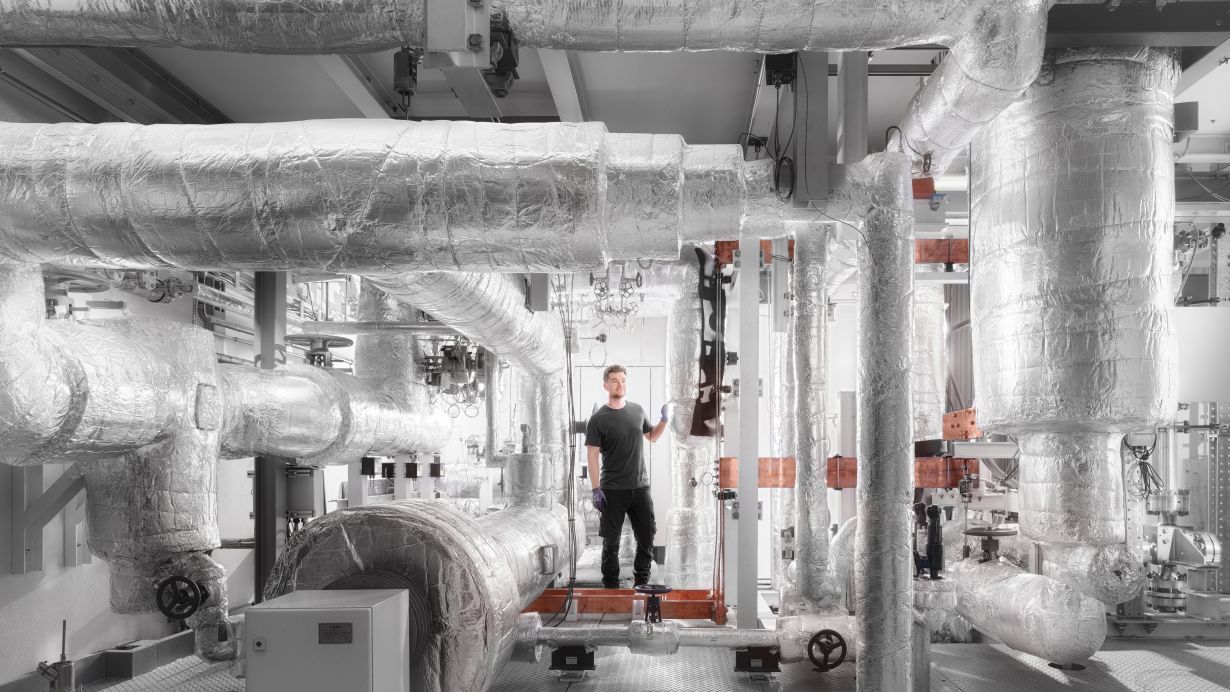
The COSMOS-H thermohydraulic test facility is used to investigate boiling phenomena and complex flow phenomena under power plant conditions.
(Photo: Amadeus Bramsiepe, KIT)

Opening of the COSMOS-H facility with (from left to right) Dr. Stephan Gabriel, Institute
for Thermal Energy Technology and Safety (ITES); Professor Daniel Banuti, Director of ITES;
Professor Jan S. Hesthaven, President of KIT and Dr. Walter Tromm, Scientific Spokesperson
of KIT Energy Center and NUSAFE Spokesperson at KIT
(Photo: Amadeus Bramsiepe, KIT)
The 30th International QUENCH Workshop
16th to 18th December, 2025 at KIT
The workshop will be held in person more information will be distributed after the summer break under https://quench.forschung.kit.edu/index.php.
The proceedings of the 29th QUENCH Workshop can be found here.
2025 The 30th Frédéric Joliot / Otto Hahn Summer School
on Nuclear Reactors "Physics, Fuels and Systems"
20th-29th August, 2025 at KIT
The Technological Development Path from Proven Designs to Advanced Modular Reactors
Top 1 From early-day reactors to modern-day reactors and challenges
Top 2 HTR for heat production, Top 3 LFR for closing the fuel cycle, Top 4 MSR for waste reduction
Top 5 Reviving early-day reactor concepts: OCR, heat pipes, space reactors (eVINCI)
Successful participation in KERNTECHNIK 2024
The KIT program NUSAFE was again strongly represented at KERNTECHNIK 2024, which took place from 11 to 13 June 2024 in Leipzig. Three NUSAFE scientists were involved in the program committee. Ten employees from the Institute of Technology and Management in Construction (TMB) took part in the event. They presented the research activities of the Deconstruction Department in a total of four presentations and two digital posters. The ROBDEKON II research project was also presented at an exhibition stand with various exhibits at the trade exhibition. Two young scientists from the TMB were awarded prizes for their conference contributions: Siavash Kazemi took third place for the best poster and Eric Rentschler was awarded second place for the best presentation.
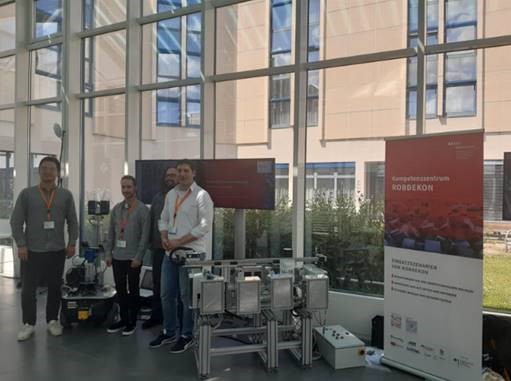
Presentation of the project ROBDEKON II
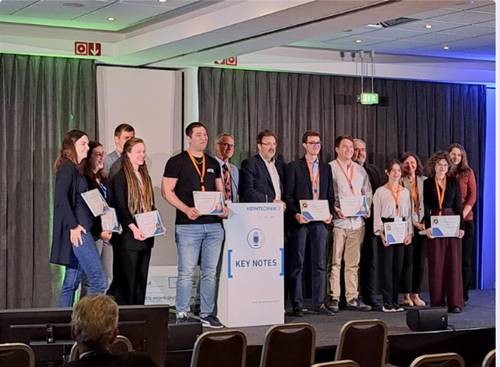
Award Ceremony
Dismantling team represented at KONTEC 2023 in Dresden
From 30.08.2023 - 01.09.2023 the 16th International Symposium “Conditioning of Radioactive Operational and Decommissioning Waste & Decommissioning of Nuclear Facilities” including the 16th Status Report of the BMBF “Decommissioning and Dismantling of Nuclear Facilities” took place in Dresden. The KONTEC Symposium in Dresden is an international conference focusing on the conditioning of radioactive operational and decommissioning waste and the decommissioning of nuclear facilities. It brings together operational experts, plant manufacturers, service providers, experts and representatives of the authorities to exchange information and experience.
In over 130 specialist presentations, keynote speeches and poster presentations, speakers from industry, research and federal companies passed on their knowledge on the subject to a broad audience of interested parties from Germany, Europe, the USA and Asia.
In five KONTEC direct short lectures and four poster presentations, the research results of various national and international research projects, such as EMOS, EKont, ViSDeMe and MAARISS, were presented by employees of the TMB's “Dismantling of Conventional and Nuclear Structures” department.
In the run-up to KONTEC, the FORKA doctoral seminar was also held on 29.08.2023, organized by the project sponsor “Gesellschaft für Anlagen und Reaktorsicherheit (GRS)”. In addition to a workshop on current issues and perspectives in nuclear decommissioning, the training nuclear reactor AKR-2 at TU Dresden was visited. The event concluded with a joint dinner with representatives from industry.
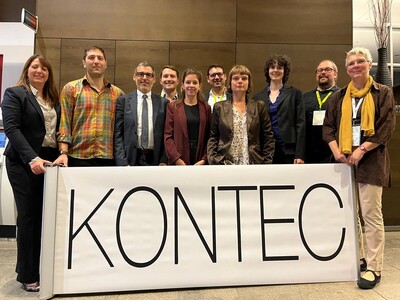
10th European Review Meeting on Severe Accidents Research (ERMSAR)
From May 16 to 19, 2022, scientists from 21 countries met in Karlsruhe at the 10th European Review Meeting on Severe Accidents Research (ERMSAR). The approximately 120 participants of the conference, which was hosted by KIT for the second time, presented and discussed current research results on severe accidents in nuclear power plants and possible preventive measures. One plenary session was specifically dedicated to the topic 'Fukushima: 10 (+1) years after'. For the first time, the IAEA and OECD/NEA were involved in the organization of the conference, in addition to the European research platforms NUGENIA and SNETP and their member institutions. On the last day of the conference, the participants visited the experimental facilities on severe accident research at KIT Campus North, which are embedded in the Programme Nuclear Waste Management, Safety and Radiation Research (NUSAFE). The feedback on the event organized by a team led by Dr. Fabrizio Gabrielli, INR, was consistently positive.
The proceedings of the 10th European Review Meeting can be found here.
